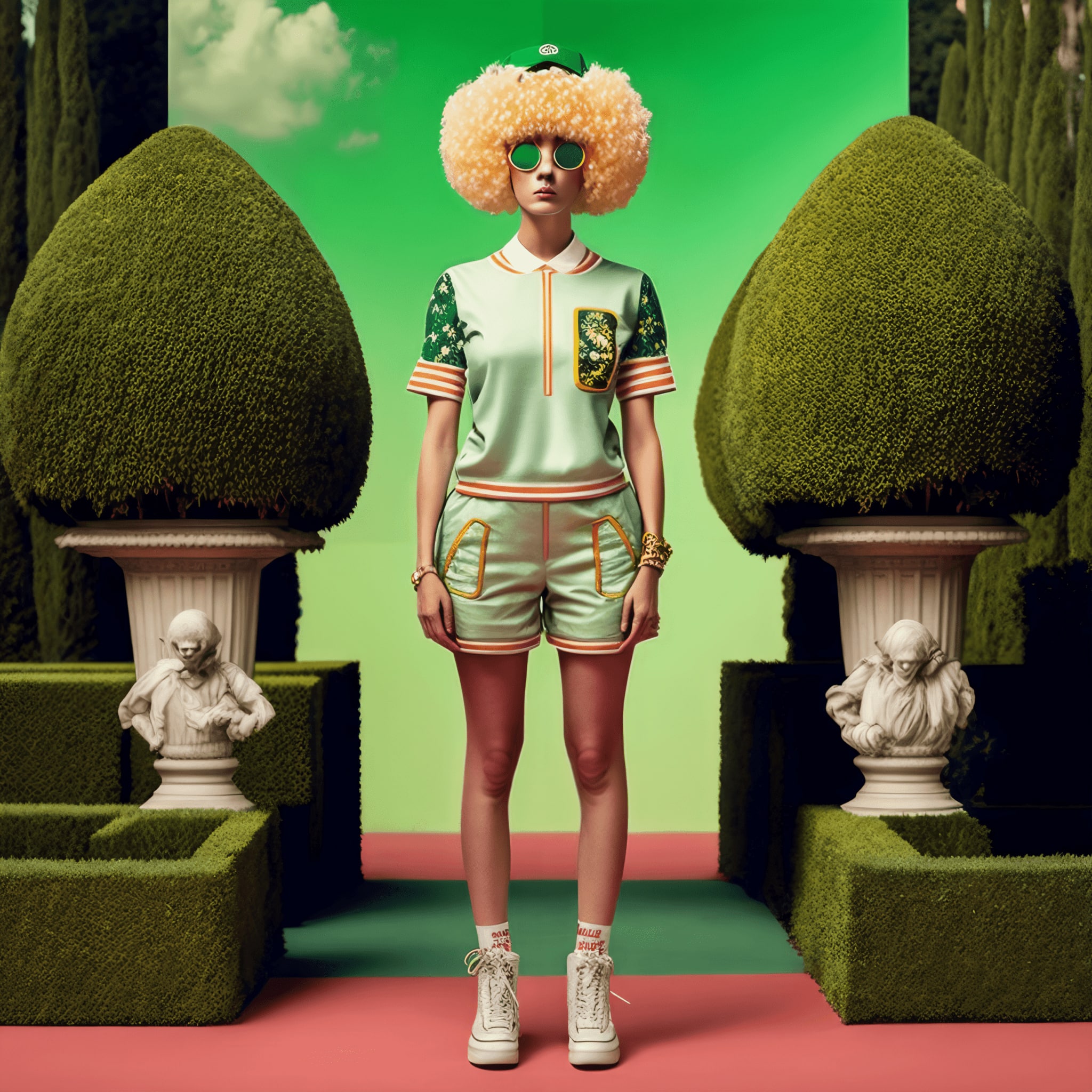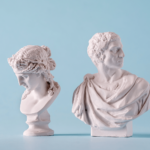Once a survival tool to shelter from the cold, fashion has evolved into an expression of our personality: not only for the choice of garments but for what each garment serves ornamentally, symbolically, and socially. Since the 13th century, fashion has influenced entire populations by allowing people to display their social status through clothing, especially the upper classes’ wealth and power. Throughout the centuries, the appreciation for fashion and beauty grew stronger. The formal dress worn in courts of the 17th century demonstrates the evolution of clothing: Creating a privileged environment where the constant creation and transformation of new trends could happen. “Pue” dolls circulated in royal palaces, dressed to reflect various trends. They were real models who informed the aristocracy about the latest fashions (the ancestors of the more accessible fashion figures in newspapers).

Sign up for the LF Italy newsletter
Access The Rare and Wonderful, LF Italy’s monthly newsletter. Get our latest interviews and discoveries in wellness, travel, innovation, food & drink, unique stays and more.
Dressing “à la mode nouvelle” (following the new style of dress) instead of the older “manière” or “façon,” from which the English term “fashion” is derived, became synonymous with “being fashionable,” especially according to the French court during the reign of Louis XIV. Special garments were worn in many past and current societies to show one’s class: In ancient times, only Roman senators were permitted to wear garments dyed with Tyrian purple; in China, before the proclamation of the Republic, the emperor was the only one who could wear yellow; only high-ranking Hawaiians could wear feather cloaks or carved whale teeth.
Clothes were considered valuable assets to be passed on to heirs, on par with gold or other precious materials. They were a mark of privilege and social distance. Those who were less wealthy would only wear roughly cut clothes colored with inexpensive dyes, often in the color gray.
Clothes, therefore, serve not only the purpose of covering oneself and gratifying vanity, but they also allow us to communicate, send and receive information about the gender, age, social class, and personality of the person inside them, while also holding great symbolic power. With the rise of feminism in the 1960s, the miniskirt began to represent freedom, emancipation, and women’s rights to show and manage their bodies independently. They also mirror life choices. For example, cassocks or nuns’ robes symbolize the renunciation of vanity.

FASHION HAS THE POWER TO ABSORB SOCIAL CHANGE AND CHANNEL IT AESTHETICALLY.
It mirrors the changing times, reflected in the clothes and accessories that take on specific meanings. Social and significant historical events have always influenced the fashion system. A tangible example is the profound changes that occurred due to the pandemic. Covid has generated new models of approaching everyday life with greater social and environmental awareness and responsibility. People are rediscovering the importance of values and respect for the environment.
In the last few decades, we have already seen an acceleration in the pace of production and rampant consumerism, resulting in a highly negative impact on our planet. The pandemic, however, caused a total shutdown in the fashion world which rattled the system. It led to the idea that it is better to have a more conscious and less consumerist approach to fashion with garments that last and that more benefit can be found in being less wasteful and reconsidering the hectic pace of runways and fast fashion.


Anna Wintour, Editor in Chief of American Vogue, stressed the importance of sustainable fashion. “We are all in agreement that we need to show less, that we need to have more of an emphasis on sustainability, and we need to have more emphasis on luxury and creativity and craft,” she said in her YouTube show No Filter with supermodel Naomi Campbell.
In other words, fashion should be more conscious, eco-friendly, and sustainable, especially for new generations. According to a recent Pew Research poll, Millennials, particularly Gen Zs, are more aware and concerned about sustainability, in all aspects, than previous generations, with Gen Z fashion trends rooted in social and environmental issues.
The pandemic also redefined style and how we shop: Championing comfort and casual with oversized clothing and flat shoes, as well as the rediscovery of vintage and second-hand garments. On the other hand, post- pandemic looks express the new zest for life and the desire for pre-virus carefreeness, with a return to sensuality that focuses on light, transparent, cut-out fabrics and exposed lingerie with corsets, bustiers, and more. Legs are highlighted with miniskirts and micro- skirts, essentially a band that encircles the hips, sometimes combined with thigh-high boots. Sexier fabrics such as vinyl, latex, and patent leather are becoming more and more common.
The current trends are also trying to express more positivity: The shinier, the better. We are seeing the return of bright colors, fluorescent and metallic looks, and glitter dresses covered in sequins, crystals, and lurex, which are no longer considered evening wear but have become surprisingly wearable during the day.
The desire for optimism, a return to normalcy, being social again, togetherness, and freedom have turned the pre-established rules of fashion on its head and bent them with greater awareness and respect, as the wise Dame Vivienne Westwood once said: “Buy less. Choose well. Make it last.”
Credits:
The Explorations in Fashion Series was created by Artist and Designer Ken Kelleher | @anchorball































